In a remarkable discovery that bridges the gap between our present and Earth’s prehistoric past, a perfectly preserved Ice Age bear skull has been unearthed from the depths of a remote cave system. This extraordinary find provides paleontologists with a rare glimpse into the life of ancient megafauna that roamed the planet during the Pleistocene epoch, approximately 2.6 million to 11,700 years ago. The skull, estimated to be between 20,000 and 40,000 years old, has sparked excitement throughout the scientific community for its exceptional condition and the wealth of information it holds about extinct bear species, evolutionary biology, and ancient ecosystems. Join us as we explore the significance of this discovery, the meticulous excavation process, and what this ancient bear can tell us about our planet’s past – and possibly its future.
The Dramatic Discovery
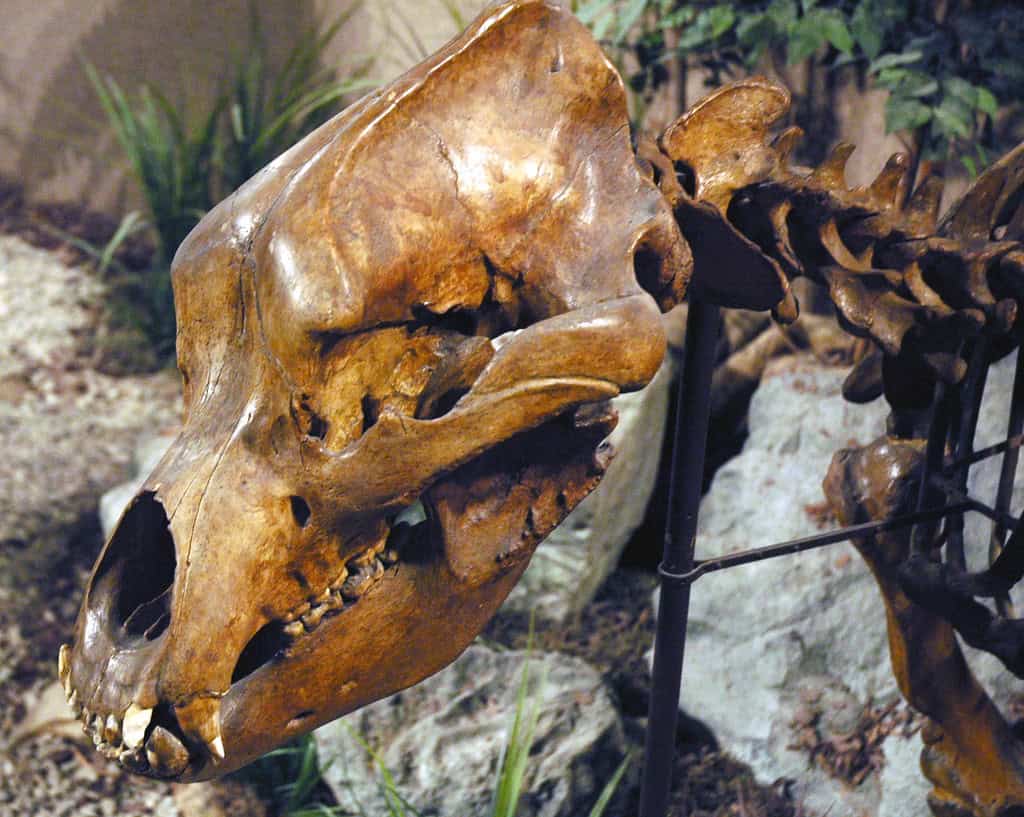
The bear skull was discovered by a team of speleologists (cave explorers) who were mapping a previously unexplored section of a limestone cave system. Located approximately 500 meters from the cave entrance, in a chamber that had remained sealed and undisturbed for millennia, the skull sat partially embedded in a calcium carbonate deposit. The constant temperature and humidity of the cave environment, coupled with minimal human interference, created ideal preservation conditions that protected the specimen from the degradation typically associated with fossilized remains. The discovery was entirely accidental – the team’s headlamps illuminated what initially appeared to be an unusual rock formation, but upon closer inspection, revealed itself to be the unmistakable silhouette of a large carnivore’s skull.
Species Identification
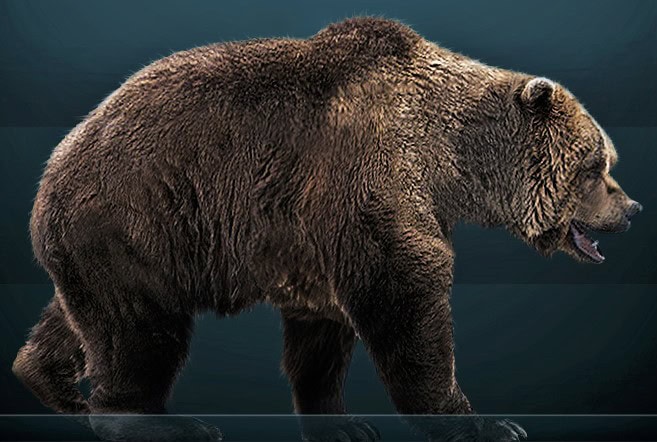
Initial examinations confirmed the skull belonged to Ursus spelaeus, commonly known as the cave bear – a massive species that stood up to 3.5 meters tall when rearing on its hind legs. Cave bears were predominantly herbivorous despite their imposing size, with dental wear patterns indicating a diet consisting mainly of vegetation. What makes this specimen particularly significant is its completeness; most cave bear remains are fragmentary, consisting of isolated teeth or bone fragments. This intact skull includes the cranium, mandible, and a full set of teeth, allowing researchers to conduct comprehensive morphological analyses. DNA extraction has already begun, with preliminary results confirming the species identification and potentially revealing new insights about the genetic diversity of cave bears during the late Pleistocene.
The Age of the Specimen
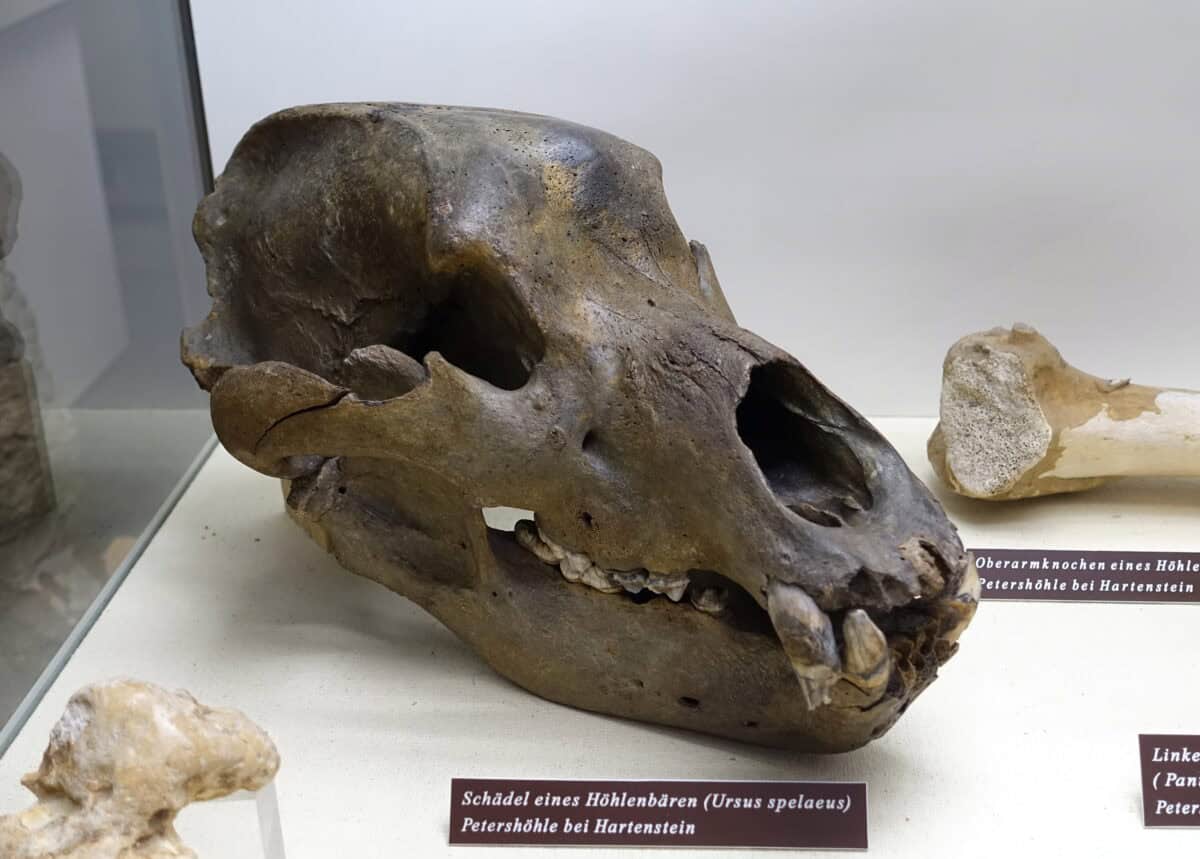
Radiocarbon dating techniques have placed the skull at approximately 32,000 years old, situating it firmly within the Late Pleistocene epoch. This period was characterized by dramatic climate fluctuations, with glacial advances and retreats reshaping landscapes and ecosystems across the Northern Hemisphere. The date is particularly significant as it falls within the timeline when cave bears began experiencing population decline, roughly 10,000 years before their ultimate extinction. This timing provides researchers with an opportunity to study a specimen from a critical period in the species’ evolutionary history, potentially offering clues about the factors that eventually led to their disappearance from Earth’s biodiversity.
The Excavation Process
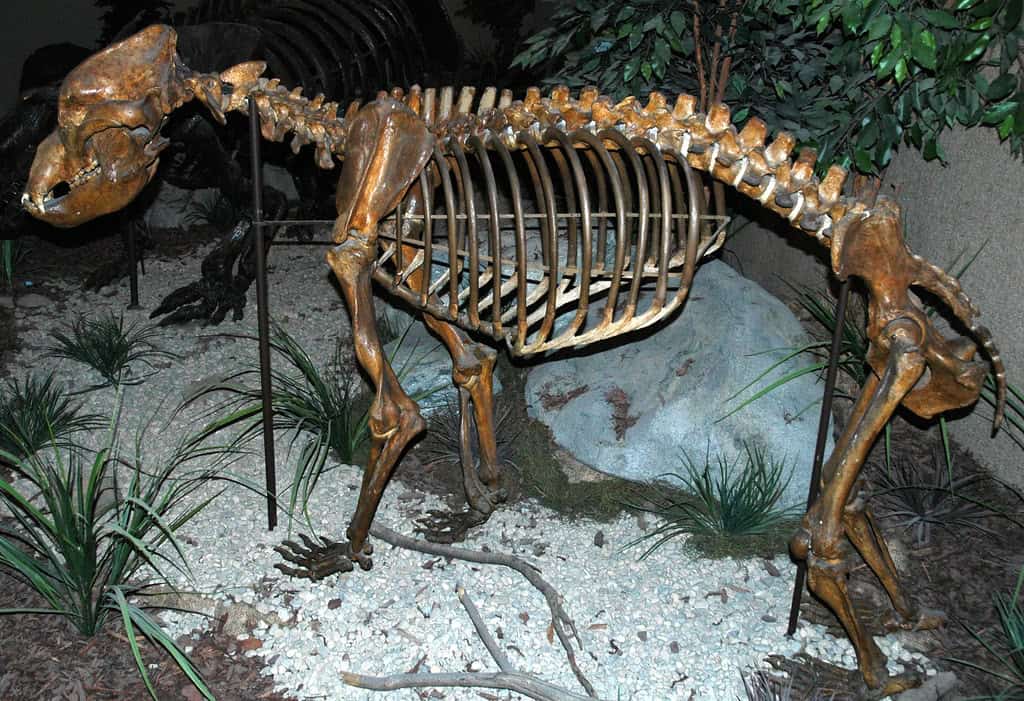
Retrieving the skull demanded extraordinary care and precision. After documenting its position through photogrammetry and 3D scanning in situ, paleontologists employed a technique known as microexcavation. This involved the use of dental picks, small brushes, and pneumatic tools to delicately separate the fossil from its surrounding matrix. The process took nearly two weeks of painstaking work, with team members working in shifts of no more than four hours to maintain the necessary level of concentration and precision. Air quality monitors and temperature controls were installed to ensure optimal preservation conditions throughout the excavation. The skull was then encased in a specialized foam support structure before being transported to a research facility for further analysis and conservation.
Anatomical Features and Size
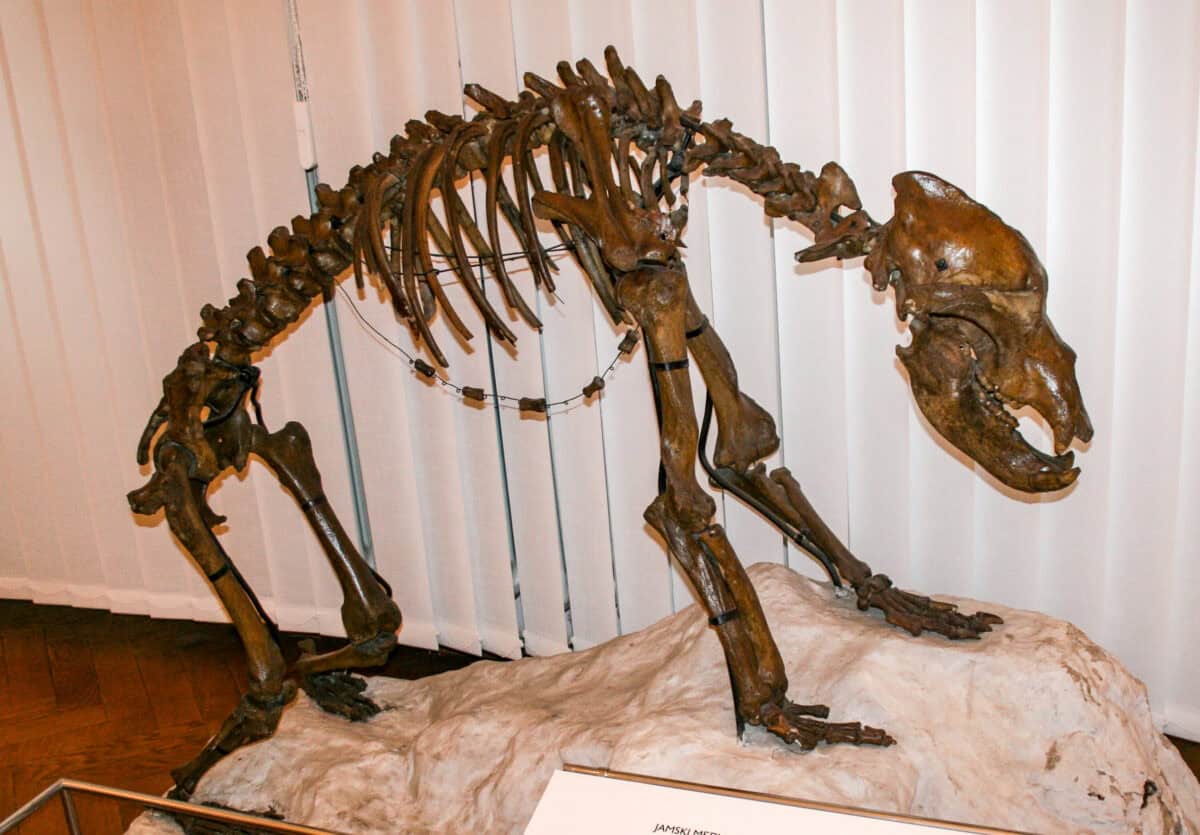
The skull measures approximately 48 centimeters in length, placing it among the larger specimens of Ursus spelaeus ever discovered. Notable anatomical features include a pronounced sagittal crest – a ridge of bone running along the top of the skull that anchored powerful jaw muscles – and expanded frontal sinuses that create the distinctive domed forehead characteristic of cave bears. The dentition reveals specialized molars with complex ridges adapted for processing fibrous plant material, supporting the theory that cave bears were primarily herbivorous despite their carnivore lineage. CT scans have revealed internal structures including the brain case, which will allow researchers to create an endocast (a model of the brain) to study the neuroanatomy of this extinct species. Comparative analyses with modern bear species are already yielding insights into evolutionary adaptations and phylogenetic relationships.
Cave Bears vs. Modern Bears
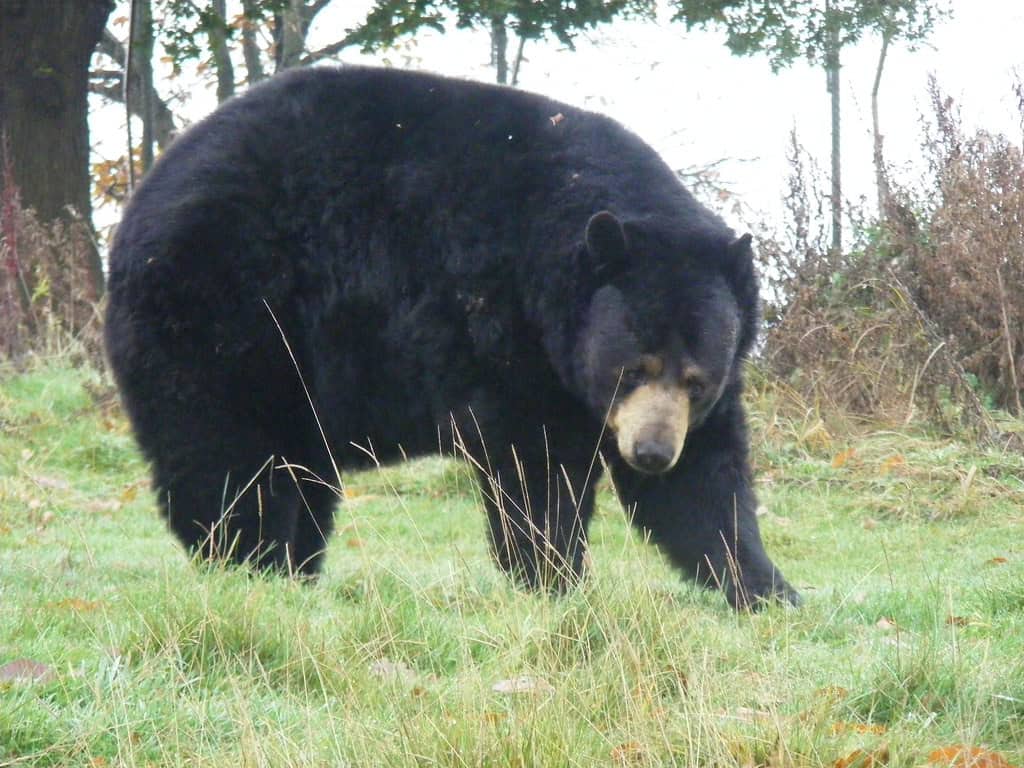
The discovery provides an exceptional opportunity to compare ancient cave bears with their modern relatives. Cave bears (Ursus spelaeus) were significantly larger than modern brown bears (Ursus arctos), with the largest males potentially weighing up to 1,000 kilograms – nearly twice the size of the largest contemporary bears. Their skull morphology reflects dietary specialization toward herbivory, whereas modern bears maintain omnivorous adaptations. Analysis of this specimen has revealed subtle anatomical differences not previously documented, including variations in the auditory bullae and zygomatic arches that may relate to different sensory capabilities or feeding behaviors. Perhaps most fascinating is how the skull shows evolutionary adaptations to Ice Age conditions, with thicker bone structure and larger sinus cavities that likely helped these ancient bears survive in colder climates. These comparisons help scientists understand evolutionary trajectories and adaptations that have shaped ursid species through time.
The Cave Environment
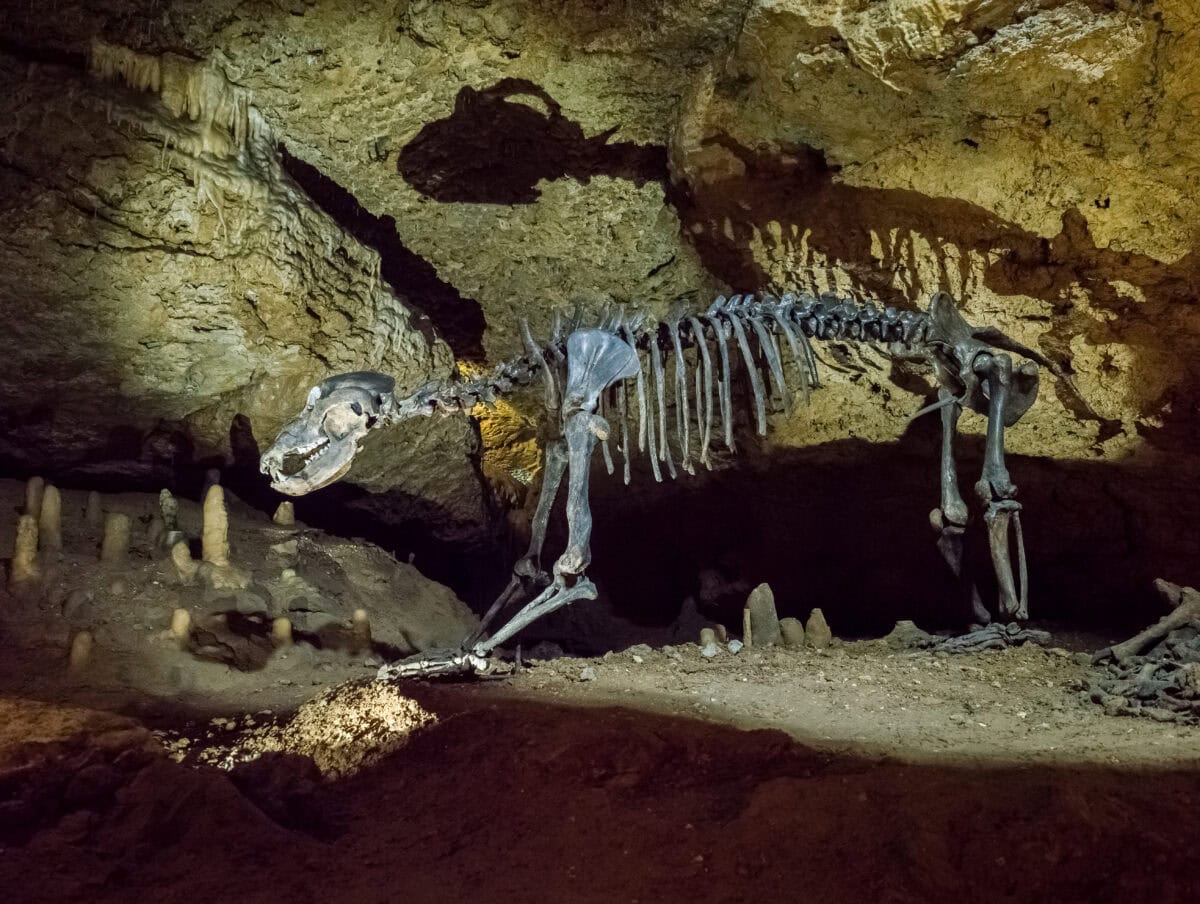
The cave where the skull was discovered has proven to be an archaeological treasure trove beyond just the bear remains. Speleothems (cave formations) surrounding the specimen have preserved a record of paleoclimate data through their chemical composition, allowing scientists to reconstruct environmental conditions during the bear’s lifetime. Pollen samples extracted from the same sedimentary layer as the skull reveal a landscape dominated by tundra vegetation interspersed with coniferous forests – typical of the periglacial environments of Ice Age Europe. The cave itself shows evidence of long-term bear habitation, with distinctive hibernation hollows (shallow depressions in the cave floor) and scratch marks on the walls. Isotope analysis of the cave sediments indicates that the region experienced significant seasonal temperature fluctuations, with winters severe enough to necessitate extended hibernation periods. This environmental context helps paleontologists understand the ecological niche these massive bears occupied and the pressures they faced during climate shifts.
Technological Analysis Methods
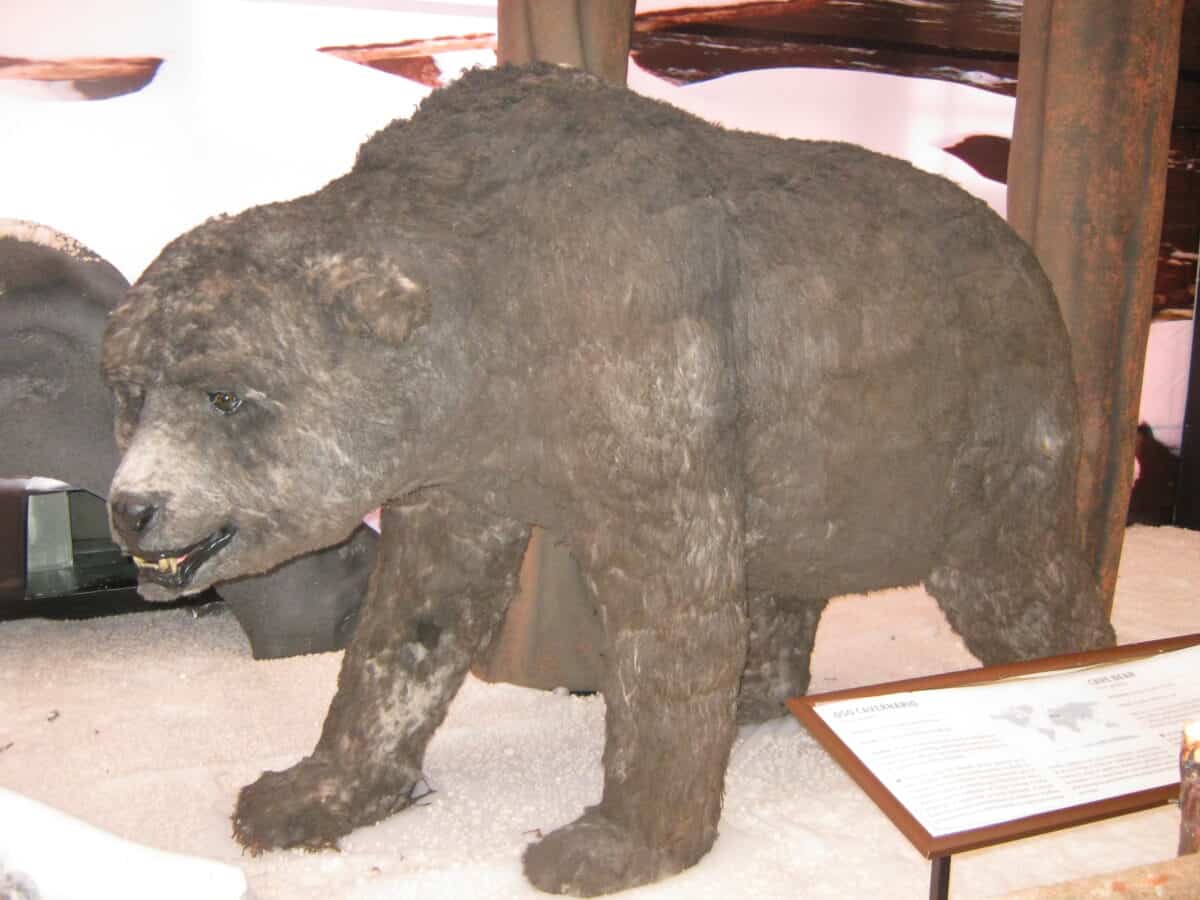
Modern technological approaches have revolutionized the study of paleontological finds like this cave bear skull. Researchers have employed micro-CT scanning to create three-dimensional models of both external and internal structures without causing damage to the specimen. These scans reveal previously inaccessible features such as the morphology of the inner ear (providing insights into the bear’s sense of balance and hearing range) and the structure of tooth roots embedded in the jawbone. Stable isotope analysis of tooth enamel has yielded information about the bear’s diet and migration patterns, while ancient DNA extraction techniques have successfully retrieved genetic material from the petrous bone – the densest part of the skull that often preserves DNA better than other skeletal elements. Researchers have also utilized scanning electron microscopy to examine microscopic wear patterns on the teeth, providing evidence of the specific types of plants the bear consumed. Combined, these technological approaches have extracted an unprecedented amount of information from a single specimen.
Clues to Extinction
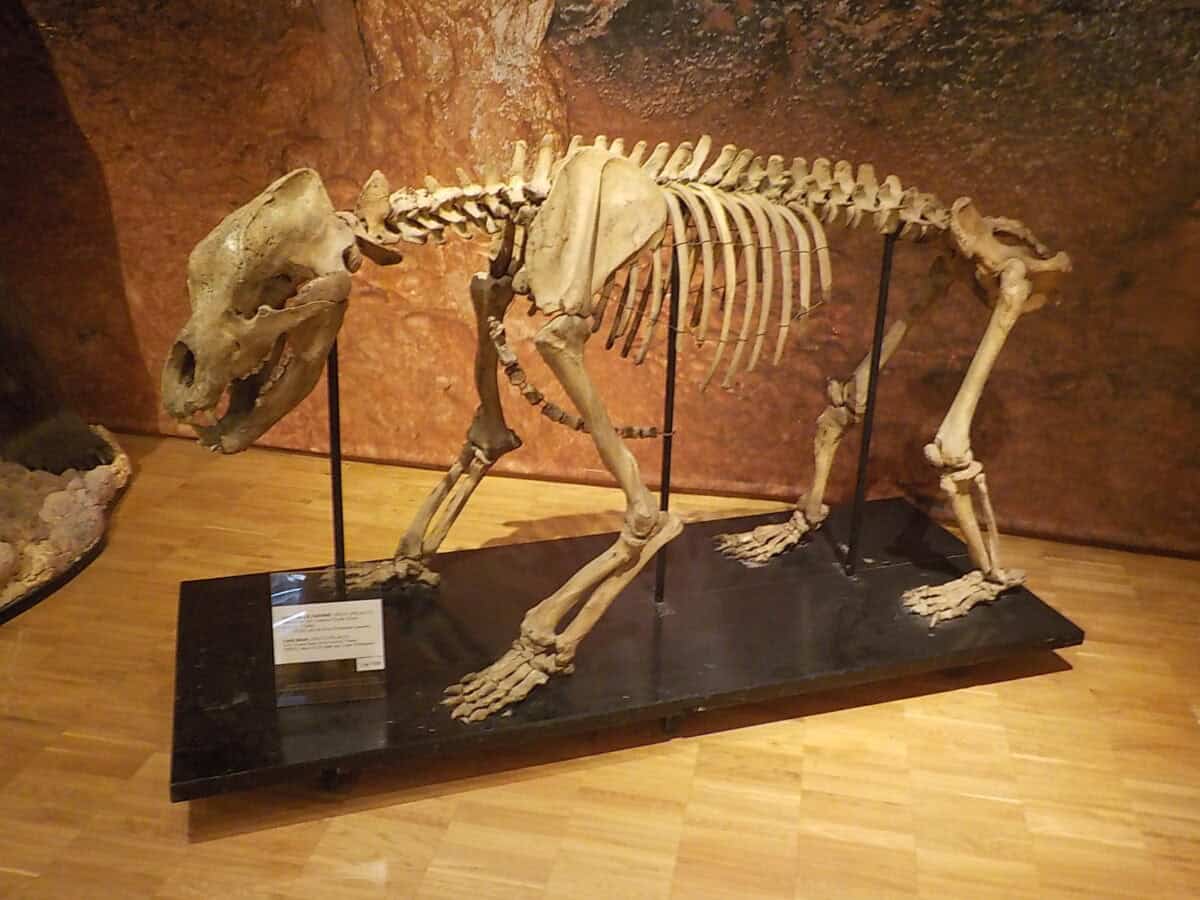
One of the most compelling aspects of this discovery is what it might reveal about the extinction of cave bears approximately 24,000 years ago. The skull shows signs of nutritional stress, including evidence of interrupted tooth development (visible as lines in the enamel) that correspond with periods of food scarcity. This supports theories that climate change may have reduced the availability of the specific plant foods that cave bears depended on. Interestingly, the skull also exhibits a healed fracture on the parietal bone, suggesting that the bear survived a significant injury – possibly from competition with other bears or conflicts with early humans who occupied the same territories. DNA analysis may reveal reduced genetic diversity that often precedes extinction events, while isotope studies of bone collagen could indicate shifts in diet as traditional food sources became scarce. As one of the many megafauna species that disappeared during the Late Pleistocene extinction event, cave bears represent an important case study in understanding how large mammals respond to environmental pressures and human competition.
Human Interaction with Cave Bears
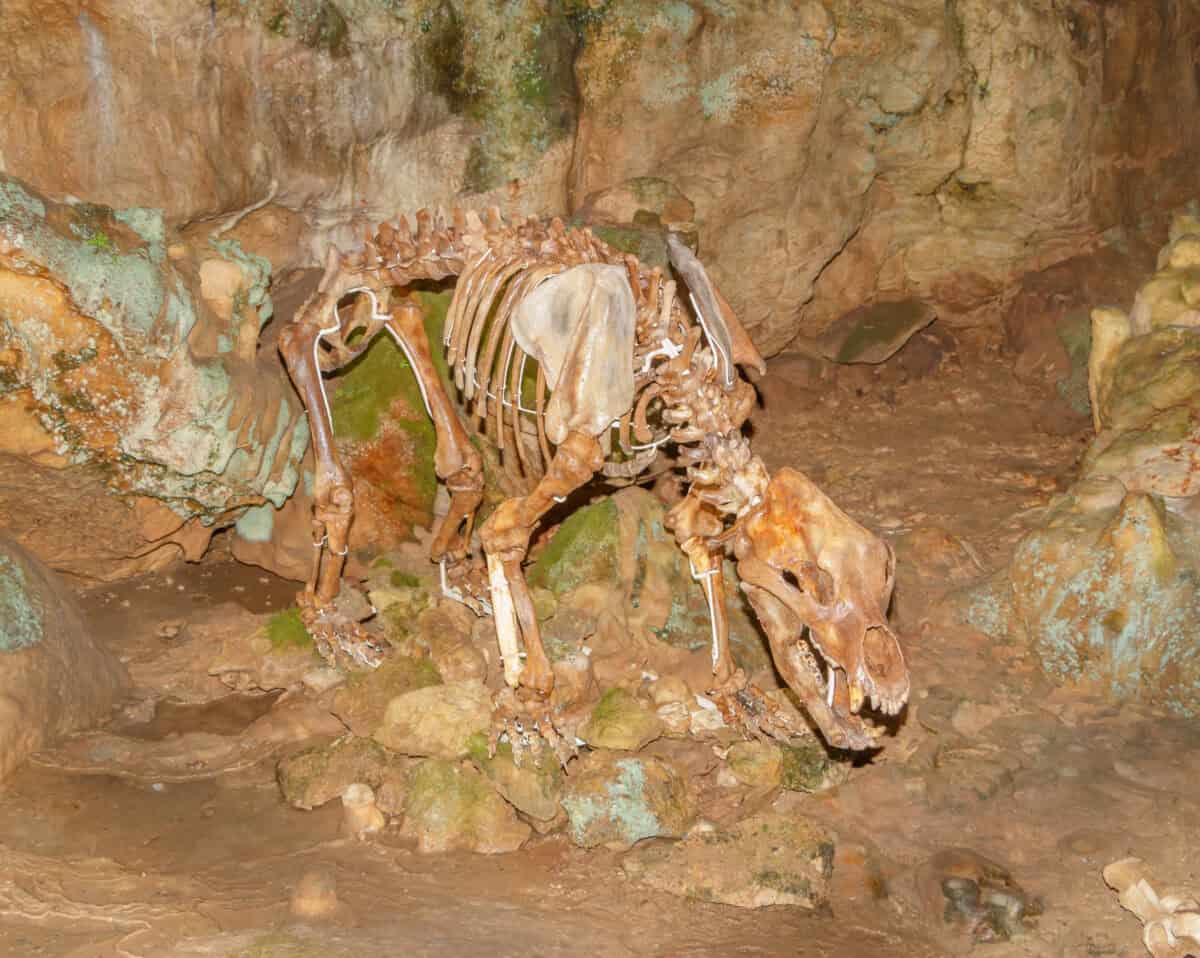
The relationship between early humans and cave bears has long fascinated anthropologists, and this find adds new dimensions to our understanding of these interactions. While this particular skull doesn’t show direct evidence of human modification, the cave contained nearby artifacts including Aurignacian stone tools dated to approximately the same period. This suggests human presence in the vicinity, if not direct interaction with this specific bear. Historical evidence from other sites has revealed complex relationships between humans and cave bears, ranging from active hunting to potential ritualistic practices involving cave bear remains. Some Upper Paleolithic cave sites across Europe contain evidence of what appears to be intentional arrangements of cave bear skulls and bones, suggesting possible ceremonial significance. Competition for cave habitation was likely another dimension of human-bear interactions, as both species sought shelter in the same geological features. This specimen may contribute to our understanding of how these two large mammals navigated shared landscapes during the Late Pleistocene.
Conservation and Exhibition Plans
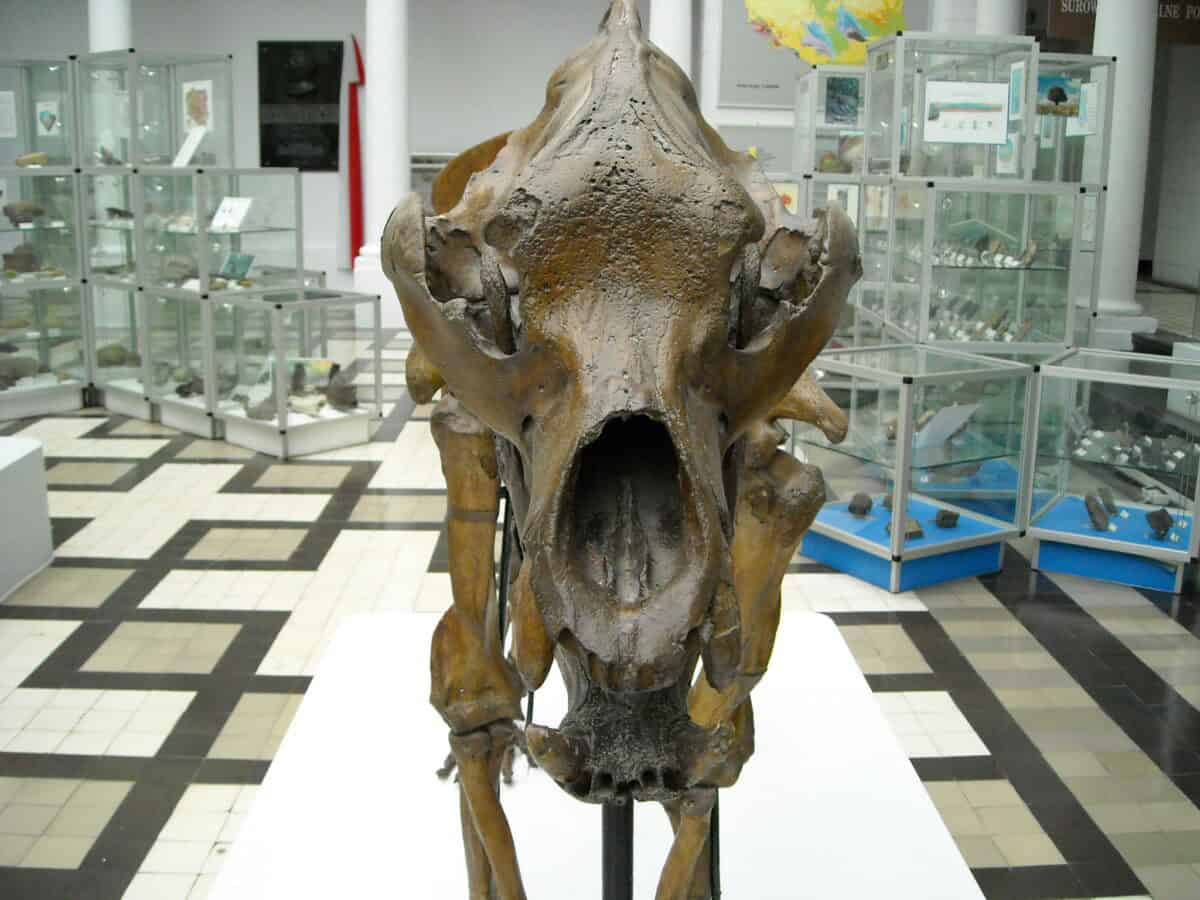
Preserving this exceptional specimen for future research requires specialized conservation techniques. After initial cleaning and stabilization, conservators applied a dilute solution of paraloid B-72, a reversible acrylic resin that consolidates fragile fossil material without compromising future scientific analysis. The skull is now maintained in a climate-controlled environment with precise humidity and temperature regulation to prevent deterioration. Plans for public exhibition involve the creation of a custom display case with oxygen-scavenging technology to minimize oxidative damage and UV-filtered lighting to prevent color changes to the specimen. A high-resolution 3D-printed replica will allow visitors to examine details that would be impossible to see in a traditional display setting, while augmented reality elements will bring the cave bear to life, showing how the animal would have moved and interacted with its environment. Museum curators are working with paleontologists to ensure the exhibition balances scientific accuracy with engaging storytelling, making the significance of this ancient predator accessible to the general public.
Similar Discoveries Worldwide
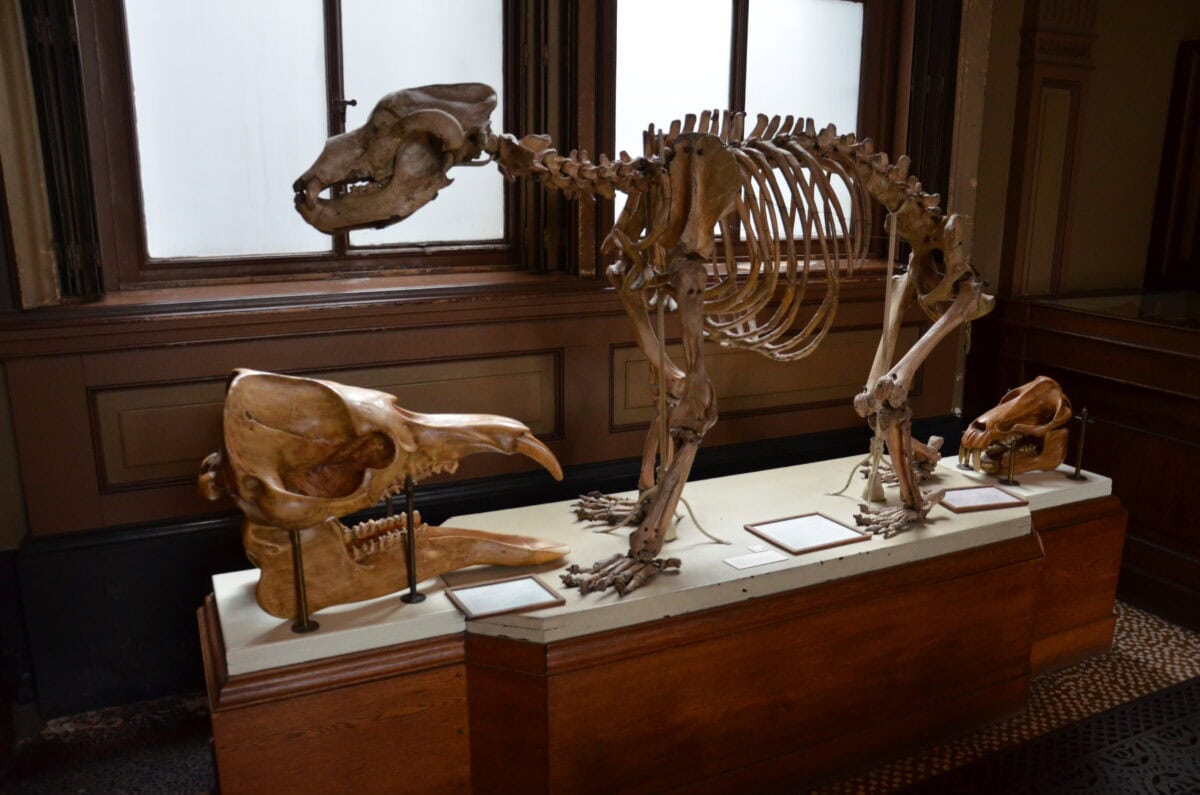
While remarkable, this cave bear skull is part of a broader pattern of Ice Age megafauna discoveries preserved in cave environments worldwide. In 2019, researchers in Russia’s Siberian permafrost uncovered a perfectly preserved cave bear carcass with soft tissues and internal organs intact – the first such find of an adult specimen. The Drachenloch cave in Switzerland yielded what appears to be intentional arrangements of cave bear skulls by Neanderthals, suggesting possible ritual significance. In North America, short-faced bear remains (Arctodus simus) have been recovered from caves in Missouri and California, representing the New World counterpart to the European cave bear. These discoveries collectively contribute to our understanding of bear evolution and the diverse ursid species that existed during the Pleistocene. Each find adds another piece to the puzzle of how these magnificent animals lived, interacted with their environment, and ultimately disappeared from most of the planet. The preservation quality of cave environments makes them particularly valuable time capsules for paleontological research, protecting specimens from the elements for tens of thousands of years.
The Broader Significance
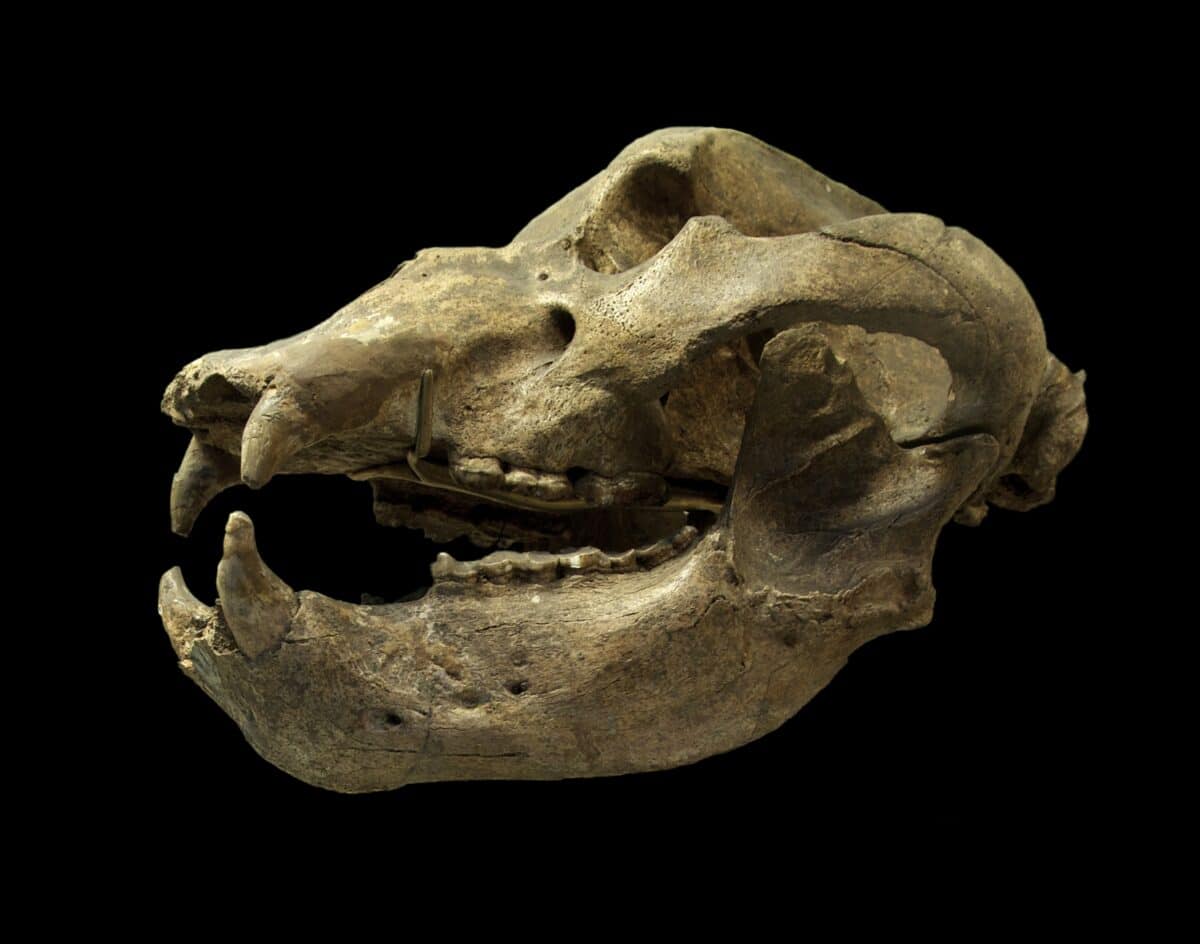
This exceptionally preserved cave bear skull transcends its value as a mere fossil, offering insights that extend far beyond paleontology. It serves as a tangible connection to Earth’s past ecosystems and the dramatic environmental changes that have shaped life on our planet. The specimen provides critical data points for understanding patterns of extinction and survival during periods of climate change – lessons that hold profound relevance as we face contemporary biodiversity challenges. From an evolutionary perspective, it illuminates the adaptive responses of large mammals to changing environments over millennia, demonstrating both the resilience and vulnerability of species facing environmental pressures. The discovery also highlights the importance of cave systems as natural archives of Earth’s history, preserving evidence that would otherwise be lost to time. By studying this ancient bear, researchers gain not only a better understanding of a magnificent species that once dominated European landscapes but also valuable context for interpreting current ecological changes and potentially predicting future outcomes for today’s large mammals facing similar challenges.
- How Penguins Take Turns at Sea and Nest to Raise Chicks - August 9, 2025
- Dolphin Brains Compare to Those of Apes and Humans - August 9, 2025
- 14 Cutting-Edge Biotech Innovations That Will Shape the Future - August 9, 2025

